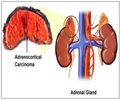A recent study conducted on the Sudden Infant Death Syndrome (SIDS) has found out that nearly all cases are associated with an increase in testosterone levels
A recent study conducted on the Sudden Infant Death Syndrome (SIDS) has found out that nearly all cases are associated with an increase in testosterone levels. Testosterone is a male sex hormone. The levels are considerably higher in infants who have died suddenly from SIDS than in infants who have died suddenly from other causes.
Researchers from the University of Washington compared hormone levels in blood collected from 169 infants who had died of SIDS and 42 who died of other causes. A significant elevation of the male hormone levels were found in the cases studied. In contrast, levels of estradiol, an estrogen-type hormone, did not differ significantly between SIDS victims and the control group.SIDS is the sudden and unexplained death of an infant. It is the leading cause of death among infants who are 1 month to 1 year old. SIDS should be diagnosed only when all other possible causes of death have been ruled out by a detailed evaluation of the medical history. There is no specific symptom to diagnose the condition
Previous studies have already hinted the possibility of a link between SIDS and sex hormone levels, such as the correlation between the rise in sex hormone levels and the age range of risk for SIDS. Moreover, testosterone levels have also been implicated in a number of sleep disorders associated with breathing difficulties in adults. Any alteration in the levels of the sex hormones (testosterone and estrogen) can affect the nerve structure and function in older and younger male and female animals. More importantly, any increase in these levels following birth can result in a compromise involving the nervous system in otherwise-normal infants.
In conclusion, further research is needed to determine whether testosterone is abnormal in living infants at risk for SIDS and to determine the value of monitoring testosterone or related hormones to identify those infants at increased risk of SIDS.











